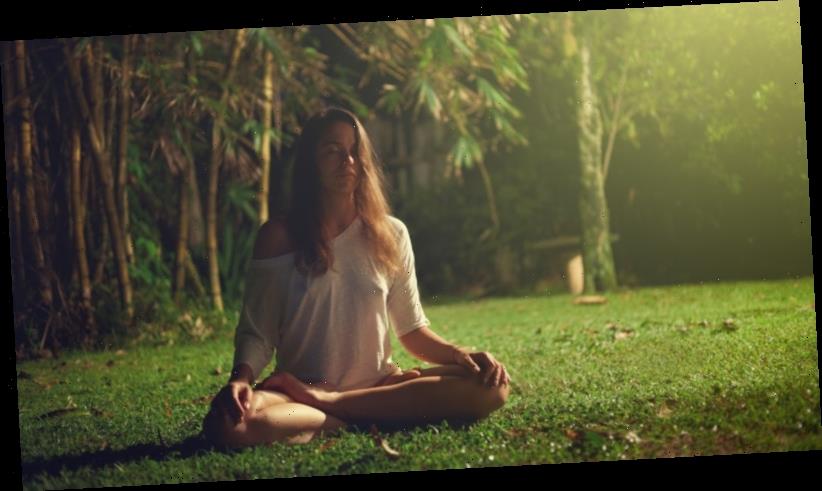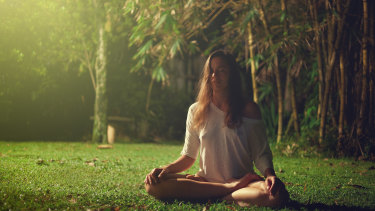It has been more than 50 years since the West began its love affair with yoga. There are now thousands of yoga studios all over Australia, most of them offering variations on the hatha tradition, which uses poses (asanas) to bring body, breath and mind into balance. But one style that’s garnering a lot of attention these days is kriya.
This ancient practice, handed down from guru to disciple over hundreds of years, is believed to harness and control the body’s energy flow. Get your energy working right, say gurus, and you’ll greatly improve your mental, emotional and physical health. It’s also said to be a fast-track approach to achieving deep meditation.
Lenish John: “Practise kriya every day and it becomes easier to overcome bad habits, control wants, greed, emotional need.” Credit:iStock
I’m a hatha yoga teacher and love what I do, but I’m aware that asanas have their limitations, so I’ve decided to explore kriya. Just when I need a guru, one appears. At a conference, I meet kriya guru and holistic healer Lenish John, and am impressed by his presence and sincerity. I’m soon immersed in a one-on-one, five-day introductory course at his Melbourne studio.
Each session begins with tea and a chat that can range from esoteric Eastern philosophy to cricket. This initial contact is important for John. “To train and guide a person, I must first know them, what will work for them,” he says. “Then I can tailor an individual practice.”
Kriya involves a series of precise movements combined with intensive breathing techniques designed to increase energy. John shows me the technique, then closely watches me repeat it. During each session, I slowly master the refined and precise actions until they become second nature.
“Devote one hour a day to this,” says John. “Do not think too much about it. Just let the mind wander, but do the exercises every day without fail. Do this and the mind will begin to change, and the body will begin to heal, by itself.”
Most of John’s clients come to him initially about health-related issues. Over the decade he has been working in Australia, he has observed many differences between Western and Eastern notions of health and wellbeing. “The No. 1 challenge for people in the West is time,” he says. “People here are always under pressure, always having to work, to maintain lifestyle. They worry about old age, struggle with finance, health, family.
“People come to me to look for something. But the guru isn’t giving anything from outside; what I am doing is helping people to activate themselves. If you practise every day, then body will take over. It becomes easier to overcome bad habits, control wants, greed, emotional need. Kriya will help iron out these things.”
The key to harnessing energy is the movement of breath. Such controlled breathing is a challenge at first, but by day five I’ve noticed a huge and sustained increase in my energy levels. I have more mental clarity and calmness, too. Like many of John’s clients, I grapple with anxieties which my own meditation practice does not relieve. Three weeks into my kriya life, I am free of these crippling fears. I am more active and achieve so much more in a day.
I ask John if there is anything else I should be doing to help my progress. Yes, he says, take a jog in a park every day. “Get your heart rate up and breathe in the green, clean space.”
I’m both amused and encouraged by this advice, so down-to-earth but with such great benefits. Dutifully I set off next morning for a brisk circuit of the local botanic gardens. My course is finished but my connection to my guru will continue. He is there to offer advice and guidance when needed.
“Yoga is not just exercise,” says John. “It is life. I’m training people how to live life, to make the mind clearer, bring it back to its natural condition and utilise it to help make a good life. Energy
is already there but it is not working. Kriya will help rewire the system to make the energy more efficient.”
This article appears in Sunday Life magazine within the Sun-Herald and the Sunday Age on sale November 24.
Source: Read Full Article

